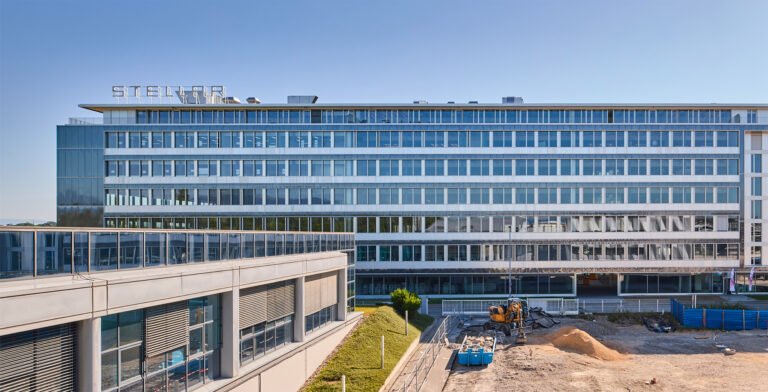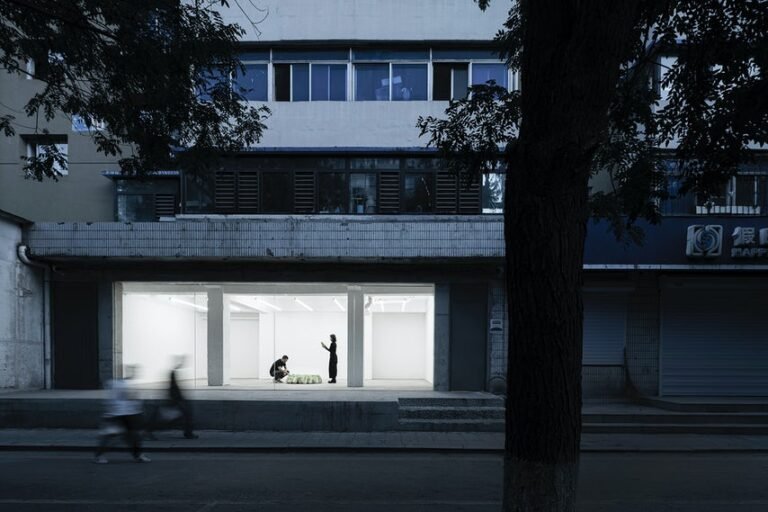Decades in the making, Michael Heizer’s colossal desert City readies for its public debut
Five decades and one National Monument designation later, sculptor and land artist Michael Heizer’s sprawling pièce de resistance is now complete and ready to receive visitors on a limited and reservations-only basis in the remote high desert of eastern Nevada roughly 200 miles north of Las Vegas.
First Initiated in 1970 when the Bay Area–born artist was 27, Heizer’s City is a monumental earthwork—a bona fide megasculpture composed of compacted dirt, rock, and concrete—that spans 1.5-miles-long and half-mile-wide within Nevada’s Basin and Range National Monument, which was designated as such in 2015 by former President Barack Obama to protect roughly 700,000-acre landscape from industrial exploitation, including a planned nuclear waste repository project at Yucca Mountain. While a vast amount of Basin and Range National Monument is public federal land overseen by the U.S. Bureau of Land Management, some sizable swaths of the landscape, famously described as “one of the emptiest spaces in a state famous for its emptiness,” are privately owned including the isolated City site in the isolated Garden Valley.
The land itself is within the ancestral territories of the Nuwu (Southern Paiute) and Newe (Western Shoshoni) nations.
As previously reported by AN, the establishing of the Basin and Range National Monument was celebrated at the time by both those rallying for the protection of the nation’s unspoiled public lands and the art world.
“Designating the Basin and Range National Monument achieves two remarkable outcomes—a world-class artwork would endure into the future as it was envisioned, surrounded by sublimely beautiful open country; and a majestic Western American landscape would remain unspoiled for future generations,” said Michael Govan, director of the Los Angeles County Museum of Art (LACMA) and former director of the Dia Art Foundation, in a 2015 statement from the museum.
Both LACMA and the Dia Art Foundation are among the numerous institutions that have over the years helped Heizer to realize his City, which was initially self-funded by the artist, through organizational and financial support. Additional largesse has come from Crystal Bridges Museum of American Art, Glenstone Museum, the Museum of Modern Art (MoMA), and the Santa Fe, New Mexico–based Lannan Foundation, along with countless private individuals who have bestowed the ambitious project with the all-important gifts of money and time.
LACMA, Glenstone, Crystal Bridges, and MoMA together comprise a four-member institutional coalition dedicated to “ensuring the financial and operational sustainability of the City.”
City is roughly the same size as the National Mall in Washington, D.C., in its enigmatic glory. It rises from the high desert at an elevation of 12,000 feet like a lost primordial metropolis, Heizer’s ambitious work is meant to evoke “ancient ceremonial constructions through its complexity and size” while also taking a form that’s distinctly “suggestive of the central hub or nucleus of a modern city,” the Triple Aught Foundation, a Nevada-based nonprofit established in 2008 to serve as steward of the site in its final stages, explained.
Wrote art critic Dave Hickey of City: “Approaching the cut on foot from the north or south, elements of a cityscape seem to be rising or falling from within the excavation that cuts flat into the rising ridge… As one walks up to an overlook, Heizer’s cultural interventions open out the space. The roads and domes and pits within the excavation are elegantly curbed into long, quiet Sumerian curves. They restore our sense of distance and scale, so the complexity of City reveals itself as a gracious intervention in the desert… composed and complete.”
Nearly 15 years later the Triple Aught Foundation was established with Heizer himself serving as board president, the organization continues to own and operate the large-scale artwork and, as such, is leading the complex effort to bring visitors to the challenging and far-flung site. Beginning September 2, the foundation is organizing short day trips of six or less visitors to the site on a strictly reservations-only basis. Trips to the site are dependent on weather conditions with the visiting season lasting September 2 through November 1. Considering the remote and rugged locale, Viewing City on a non-pre-arranged tour “is thus potentially dangerous, and it is strictly prohibited,” the foundation explained. Site visits will set adults back $150 although Nevada residents living in three surrounding counties—Lincoln, Nye, and White Pine—can explore City for free. Even for residents of these counties, reservations for site visits are still very much required.
“Over the years I would sometimes compare Michael Heizer’s City project to some of the most important ancient monuments and cities,” said LACMA’s Govan, who also serves on the board of the Triple Aught Foundation, in a more recent statement. “But now I only compare it to itself. It’s an artwork aware of our primal impulses to build and organize space, but it incorporates our modernity, our awareness of and reflection upon the subjectivity of our human experience of time and space as well as the many histories of civilizations we have built. Working with Michael Heizer for more than 25 years to help him realize his City project has been one of the most important experiences of my own life and work.”
For those who don’t have the remote expanses of eastern Nevada in their upcoming travel plans, permanent, albeit smaller, installations by Heizer are also on view at several of the previously mentioned institutions including LACMA, Glenstone, and Dia Beacon as well as at Seattle’s Myrtle Edwards Park, Rice University in Houston, and elsewhere. The Museum of Contemporary Art, Los Angeles, also owns and manages Double Negative (1969), a land sculpture by Heizer on view on Mount Mesa in Nevada.



